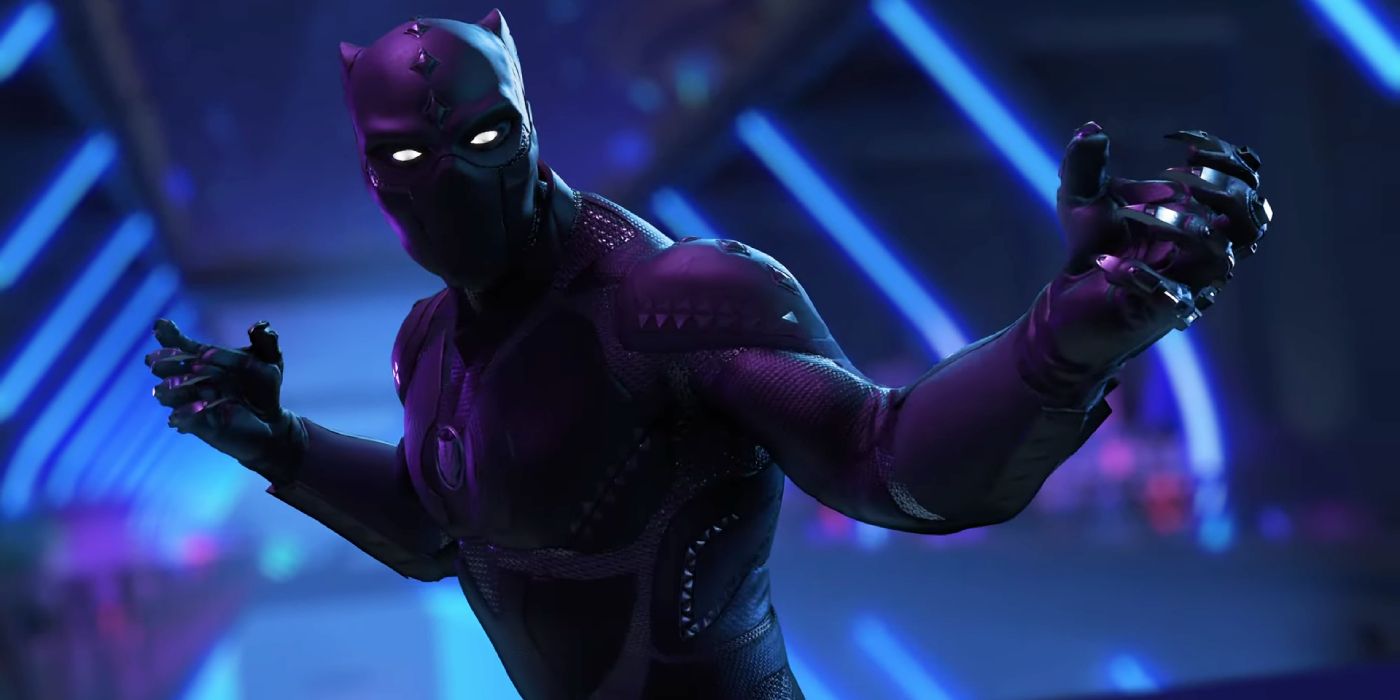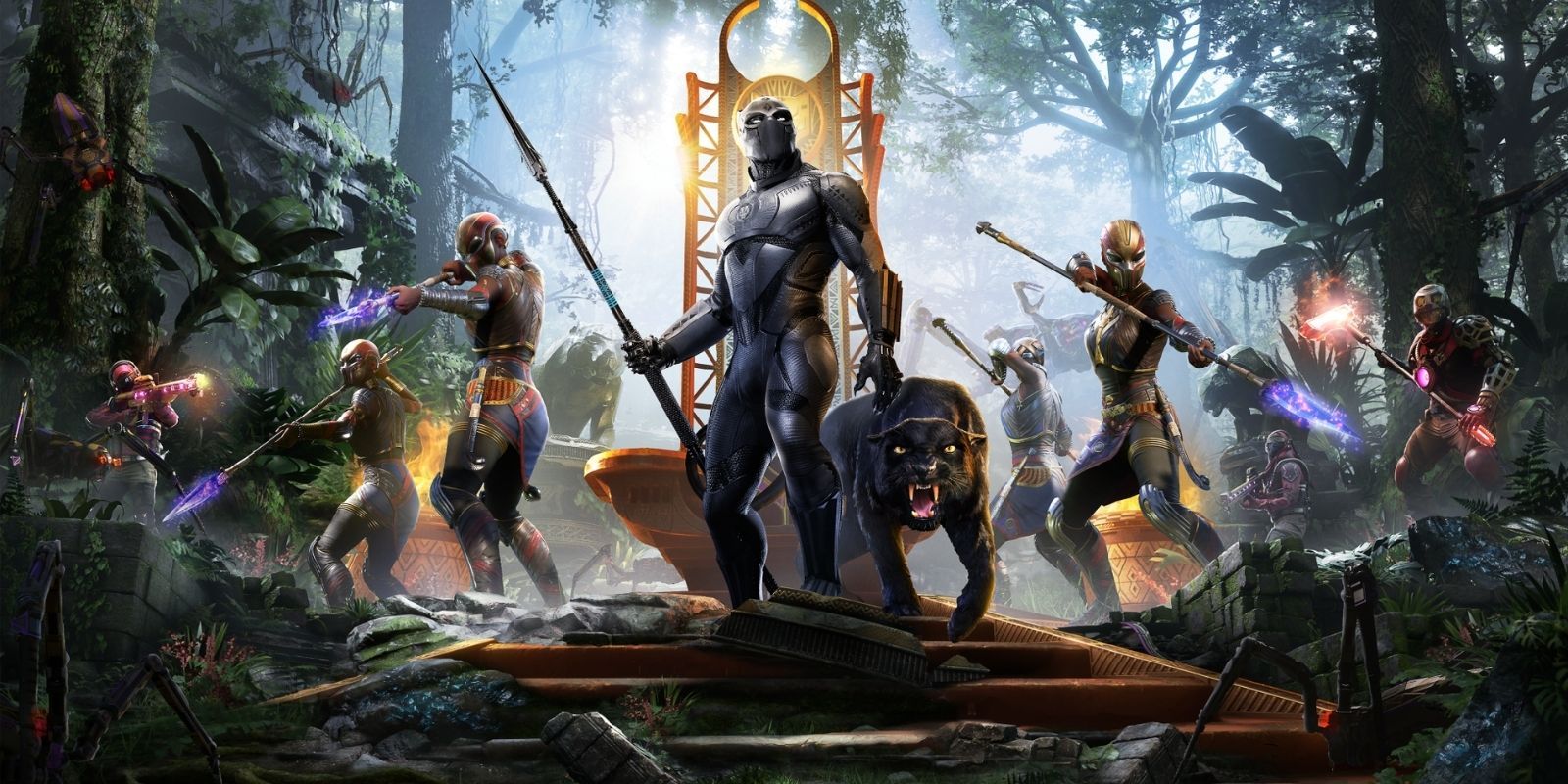
One of the most eagerly anticipated expansions to the Marvel's Avengers video game is the inclusion of Black Panther and his story-based DLC, War for Wakanda. To promote the upcoming DLC's August launch, Marvel Entertainment teamed up with game developer Crystal Dynamics to release a set of motion comics expanding the game's take on Wakanda, with comic book creators Alitha E. Martinez and David Nakayama at the helm.
In an exclusive interview with CBR, Nakayama and Martinez shared how the motion comic project came about, discussed maintaining the visual aesthetics of the world of Marvel's Avengers, and explained how they kept their comic artwork motion comic-friendly.
You’ve worked with Marvel Comics before but how did this particular project and the opportunity to build the world of Marvel's Avengers come about?
Alitha E. Martinez: Crystal Dynamics approached me with the challenge of adding some good ol' Marvel Comics DNA to the world of Marvel’s Avengers. I'm a longtime gamer and I’ve always noticed that there was a difference -- practically a line drawn in the sand -- between the "look" of game IPs and comic books. World-building is different in gaming because it's the product of an entire, team effort while comics are the stylized interpretation of an existing IP. Each artist draws their version of the same world, which can vastly differ in tone and flavor.
David Nakayama: Well, first I've got to say that I have so, so much respect for Crystal Dynamics going back to the early Legacy of Kain and Tomb Raider days, so it’s been a real treat working with them, especially on a property as close to my heart as the Avengers. Where did the company see my work, or how did they hear about me? I honestly have no idea, but I'm so glad they thought of me for this project. Often, clients reach out to me through ArtStation or other social media, so if I had to guess, that's probably how they found me.
War for Wakanda is the most eagerly anticipated expansion to Marvel's Avengers. How was it bringing this iteration of Wakanda and its royal family to life?
Nakayama: It was fantastic. Marvel fans have no idea how cool and deep and large in scope this expansion is. Working on this, I got to see up close the metric ton of design work that was put into the game, and it's just impressive as hell. As I worked, I had no shortage of great reference for all the people and places in Wakanda, and the game team was very collaborative when it came to inventing new things for our motion comic. I also have to give them a lot of credit for being very open-minded and trusting in regards to how I wanted to tell the story visually. They let me 'do my thing,' in other words, and that was much appreciated.
Martinez: I've been dancing with the Panther off and on for all the years of my career. Each time has been different, more in focus and inclusive. In essence, Black Panther and Wakanda change with the times. It represents change.
Marvel's Avengers is its own fresh take in contrast to the Marvel Comics Universe and the Marvel Cinematic Universe. How has it been keeping previous iterations of the characters and world in mind while staying visually consistent with the world of the game?
Nakayama: I spent many years in the video game industry, and trust me, threading the needle between meeting fans' expectations from other media and creating your own unique look and feel for a project is quite challenging and tricky. So I can say with some authority that they've totally nailed it here. Black Panther and his world are both familiar and refreshed in this expansion. T'Challa is familiar, but we've never seen him quite like this before, and that's really the correct balance to strike on something like this.
Martinez: I spoke a little on the difference between games and comics, there is another point that actually made doing the motion comic a little easier than drawing a comic book. The game has set environments -- detailed and rich. Also, the character have a set look. I don't have to burn ergs digging up tons of reference. The bones are all there. I'm just picking what I'm going to present and drawing it in my style. It left a lot of room just to think about the actual story.
With these released as motion comics, how do you stage your paneling to better accommodate that sense of kinetics?
Nakayama: This was the most interesting part for me. I've definitely drawn comics before, but I haven't done a lot of filmmaking, so this was really my chance to put on my cinematographer or director's cap and try to imagine what movement could bring to each scene that we made. For example, we have a scene where the camera starts in very deep space, then pulls past a character, and then another before before finally landing on our focus character in the foreground. And all with explosions and special effects happening on the periphery. We also have several scenes where a character begins the scene in one pose, and then I've drawn an alternate pose or two or a zoomed-in state to communicate a change in emotion. As I type this, the motion elements are going in, and I couldn't be more excited to see the plan come together.
Martinez: When I read a script for a comic, I watch the "movie" over and over, catching the important "snapshots" that I think would best convey what the writer is asking of me. Comics always move to me, but normally all I can do is present a Polaroid. With the motion comic I got to add a little more of the frames that I'd usually edit out. In comics too many panels that don’t serve the story only slows it down. When a comic is in motion, those shots, that would otherwise be superfluous, actually help the transition from one scene to the next.
I have to say that it was absolutely thrilling to see the Marvel logo at the beginning change to the CGI version of Black Panther's logo, then glide into the version that I drew. Even the way the splatters that I painted punctuated the scene (most of the scenes, in fact) took my breath away. It made me feel like a real part of Marvel. You see, while comics are for everyone there has always been barriers. I've fought against those obstacles for over twenty years, but I had never felt truly a part of any company. I didn't feel worthy. I think that all artist struggle with certain doubts no matter what they've drawn. When I saw that opening I knew for certain for the first time in my career that Marvel was my first home. It's a house that I helped to build.

What can you tease for readers with your War for Wakanda tie-in motion comic?
Martinez: I hope that the Marvel Avenger's: War for Wakanda tie-in motion comic sparks the readers imagination and interest in all the iterations of the Black Panther. When I see a good movie, it makes me want to read the book. When I play a good game, I read the novelizations, pick up the art books, I want to be immersed in the world. I want to know everything about it. I hope that readers get excited and want to see more.
Nakayama: This'll be a relatively short piece, but we’ve packed SO much into it. We're going to see a lot of characters and witness several eras of history. There's a lot of action and a huge payoff that leads right into the events of the game.
On a personal note, this was the equivalent of 10-12 covers worth of material, and all of it’s been drawn at that painted cover art quality that I think fans expect from me. I really enjoyed the opportunity to return to sequential comic storytelling after a LONG time away, and that it could be for this project? So much the better. Can't thank the team at Crystal Dynamics enough for the opportunity, and I really hope everyone enjoys what we've made. Cheers!
Developed by Crystal Dynamics and published by Square Enix, Marvel's Avengers is available for PlayStation 4, Xbox One, PC and Google Stadia. The War for Wakanda expansion will be released Aug. 17, with the motion comic by Alitha E. Martinez and David Nakayama available to view online.
0 Comments